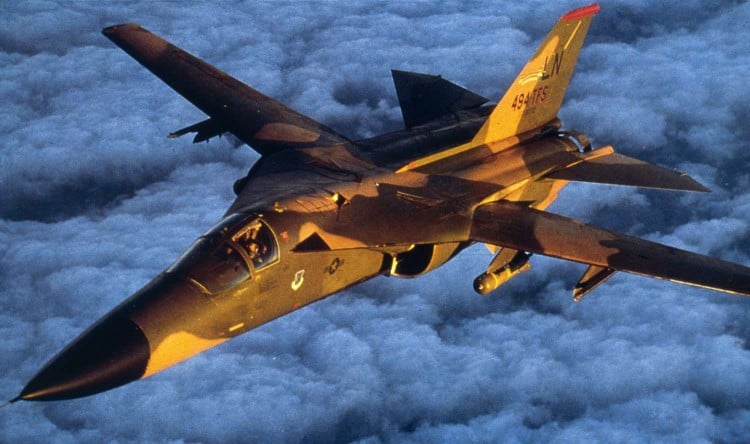
Estimated U.S. military spending for the fiscal year 2022 is $754 billion. It covers the period October 1, 2021, through September 30, 2022. Military spending is the second-largest item in the federal budget after Social Security.
This figure is more than the $715 billion outlined by the Department of Defense alone. The United States has many departments that support its defense. All these departments must be included to get an accurate picture of how much America spends on its military operations.
Key Takeaways
- The federal budget’s second-largest expense category is the military. Social Security takes the largest share.
- The military budget covers the DoD, overseas contingency operations, the VA, Homeland Security, the State Department, and many others that involve national security.
- To reduce military costs, the DoD must reduce its civilian workforce, pay and benefits of soldiers, and its military bases around the world.
- Military spending has been increasing both the current U.S. debt and budget deficits.
The Components of U.S. Military Spending
If you really want to get a handle on what the United States spends on defense, you need to look at multiple components.
The $715 billion base budget for the Department of Defense is the main contributor to the defense budget, but there are a number of other agencies that protect our nation as well, and much of their spending is devoted to the military effort. They include the Department of Veterans Affairs ($113.1 billion). Funding for the VA has been increased by nearly $30 billion over 2018 levels. That's to fund the VA MISSION Act and the VA's healthcare system. The other agencies are: Homeland Security ($54.9 billion), the State Department ($63.6 billion), and the FBI and Cybersecurity in the Department of Justice ($10.3 billion).
Defense Department Base Budget
The defense base budget for the fiscal year 2022 was established by the annual National Defense Allocation Act (NDAA), signed into law on December 27, 2021. It granted the DoD $715 billion to fund many longstanding efforts as well as a few new initiatives.
First on the list are Nuclear Modernization ($27.7 billion), Missile Defense ($20.4 billion), and Long Range Fires ($6.6 billion).
Science and Technology ($14.7 billion) and Advanced Capability Enablers receive heightened attention in FY 2022, with $112 billion allotted for Research, Development, Test and Evaluation (RDT&E) alone.
The Air Force will spend $52.4 billion, including $12 billion for 85 F-35 Joint Strike Fighters. The Navy will spend $34.6 billion and the Army receives $12.3 billion.
The Department of Defense will also spend $20.6 billion on Space-Based Systems and $10.4 billion on Cyberspace Activities.
Additional funding goes to each department for readiness development. This includes $27.8 billion to the Army, $48.5 billion to the Navy and Marine Corps, $36.5 billion to the Air Force, and $9.4 billion for Special Ops.
Service members will receive a 2.7% pay raise and an increase in their housing allowance. Family members receive $8.6 billion for child care, education, and professional development.
DoD will spend $25 billion on building maintenance and construction.
Overseas Contingency Operations
Ironically, the DoD base budget does not include the cost of wars. That falls under Overseas Contingency Operations. It's budgeted at $69 billion for DoD. Since 2001, the OCO budget has spent $2 trillion to pay for the War on Terror.
Note
The 2022 NDAA allocated $4 billion to assist the European Deterrence Initiative to defend against Russia, including $300 million for troops to assist Ukraine's border, and $150 million to assist other Baltic countries with border security.
Military Spending History
Here's a summary of military spending in billions of dollars since 2003, as provided in the official federal budget documents.
| FY | DoD Base Budget | DoD OCO | Support Base | Support OCO | Total Spending |
|---|---|---|---|---|---|
| 2003 | $364.9 | $72.5 | $437.4 | ||
| 2004 | $376.5 | $91.1 | $467.6 | ||
| 2005 | $400.1 | $78.8 | $478.9 | ||
| 2006 | $410.6 | $124.0 | $109.7 | $644.3 | |
| 2007 | $431.5 | $169.4 | $120.6 | $721.5 | |
| 2008 | $479.0 | $186.9 | $127.0 | $792.9 | |
| 2009 | $513.2 | $153.1 | $149.4 | $815.7 | |
| 2010 | $527.2 | $163.1 | $160.3 | $0.3 | $851.6 |
| 2011 | $528.3 | $158.8 | $167.4 | $0.7 | $855.2 |
| 2012 | $530.4 | $115.1 | $159.3 | $11.5 | $816.3 |
| 2013 | $495.5 | $82.1 | $157.8 | $11.0 | $746.4 |
| 2014 | $496.3 | $85.2 | $165.4 | $6.7 | $753.6 |
| 2015 | $496.1 | $64.2 | $165.6 | $10.5 | $736.4 |
| 2016 | $521.7 | $58.9 | $171.9 | $15.1 | $767.6 |
| 2017 | $523.2 | $82.5 | $177.1 | $35.1 | $818.9 |
| 2018 | $574.5 | $88.1 | $181.8 | $46.4 | $890.8 |
| 2019 | $616.2 | $68.8 | $206.4 | $10.1 | $904.3 |
| 2020 | $633.3 | $71.3 | $215.0 | $8.2 | $935.8 |
| 2021 | $636.4 | $69.0 | $228.4 | $0 | $933.8 |
As of 2022, funds for Overseas Contingency Operations (OCO) are included in the general base Department of Defense (DOD) fund, so military spending is no longer distinguished between the two, for budgeting purposes. In 2022 the federal budget allocated $752.9 trillion to the Department of Defense, which is a 1.6% increase from the total amount allocated 2021 (including base and OCO).
Factors Influencing the OCO Budget
- 2003: Iraq War launched March 19.
- 2004: U.S. torture at Abu Ghraib prison increased resistance to the war, but not enough to lower costs.
- 2005: Afghanistan War costs rose to protect free elections.
- 2006: Costs rose in Iraq.
- 2007: Surge in Iraq to counter violence.
- 2008: Violence rose in Middle East due to recession.
- 2009: Surge in Afghanistan.
- 2010: Obama funds Iraq drawdown.
- 2011: Iraq War ended but costs reached all-time high.
- 2012: Troop withdrawal in Afghanistan War. Costs began falling.
- 2013: Sequestration cut spending.
- 2014: Wind-down of Afghanistan War.
- 2015: Sequestration cut spending. Still higher than in 2007.
- 2016: Resurgence of ISIS.
- 2017: Increase in VA and FBI funding. Trump asked Congress for $30 billion more in military spending.
- 2018: Trump asked Congress to repeal sequestration for the defense budget. Requested a spending increase to fight ISIS.
- 2019: Congress repealed sequestration for defense for two years.
- 2020: Trump increase VA and OCO and reduced the State Department.
- 2021: Increase to the base budget for all departments offset decreases in OCO and emergency spending.
The Future of U.S. Defense Spending
Defense is the largest category of discretional spending in the U.S. budget, second only to Social Security). The Defense Department now spends more than half of its budget on personnel and maintenance. That is expected to rise significantly in the coming years, thanks to retirement and medical costs. That leaves little funds for procurement, research, and development, construction, or housing.
Note
U.S. military spending is greater than those of the next 10 largest government expenditures combined. In 2020, it was more than double times more than China's military budget of $260 billion and more than 10 times bigger than Russia's budget of $65.1 billion.
Criticisms of US Defense Spending
How could the Department of Defense become more efficient? Critics of defense spending cite three options. First, it could reduce its civilian workforce instead of resorting to hiring freezes and unpaid furloughs. Second, it could reduce pay and benefits costs for each soldier. Instead, it plans to raise both. Third, it could close unneeded military bases. By its own estimates, the DoD is operating with waste and excess in a number of areas, including 40% excess capacity in its depot facilities alone.
The Role of Congress
Congress won't allow DoD to close bases. The Bi-Partisan Budget Act of 2013 blocked future military base closings. Few elected officials are willing to risk losing local jobs caused by base closures in their states. Instead, the Pentagon will need to reduce the number of soldiers so it can afford the benefits of bases.
Congress is also reluctant to allow DoD to cut other costs, like military health benefits and the growth of military pay. Sequestration cut defense spending by $487 billion over 10 years. Many in Congress said the cuts jeopardize national security. They are concerned about a cutback of about 100,000 troops, closure of domestic military bases, and termination of some weapons systems. All of those cuts cost jobs and revenue in their districts.
Defense Spending and the Bigger Picture
Many critics of U.S. defense spending also cite the growing national deficit. U.S. militarism allows other allies to cut back on their own defense spending. It also raises the U.S. budget deficit and the national debt. As of 2022 the U.S. has surpassed $30 trillion in debt. The massive deficit threatens other national spending in areas of healthcare, education, infrastructure, as well as long-standing welfare programs like social security, which at the current pace is set to run out in the years between 2034-2037.
Frequently Asked Questions (FAQs)
What percentage of the U.S. budget is spent on the military?
Defense spending accounts for $754 billion of the $7.2 trillion annual budget for 2022. That means it accounts for roughly 10.5% of the U.S. budget.
Why is the U.S. military budget so high?
The president and Congress work together to set the military budget. If the president and lawmakers in Congress wanted to reduce the budget, they could cut it.






